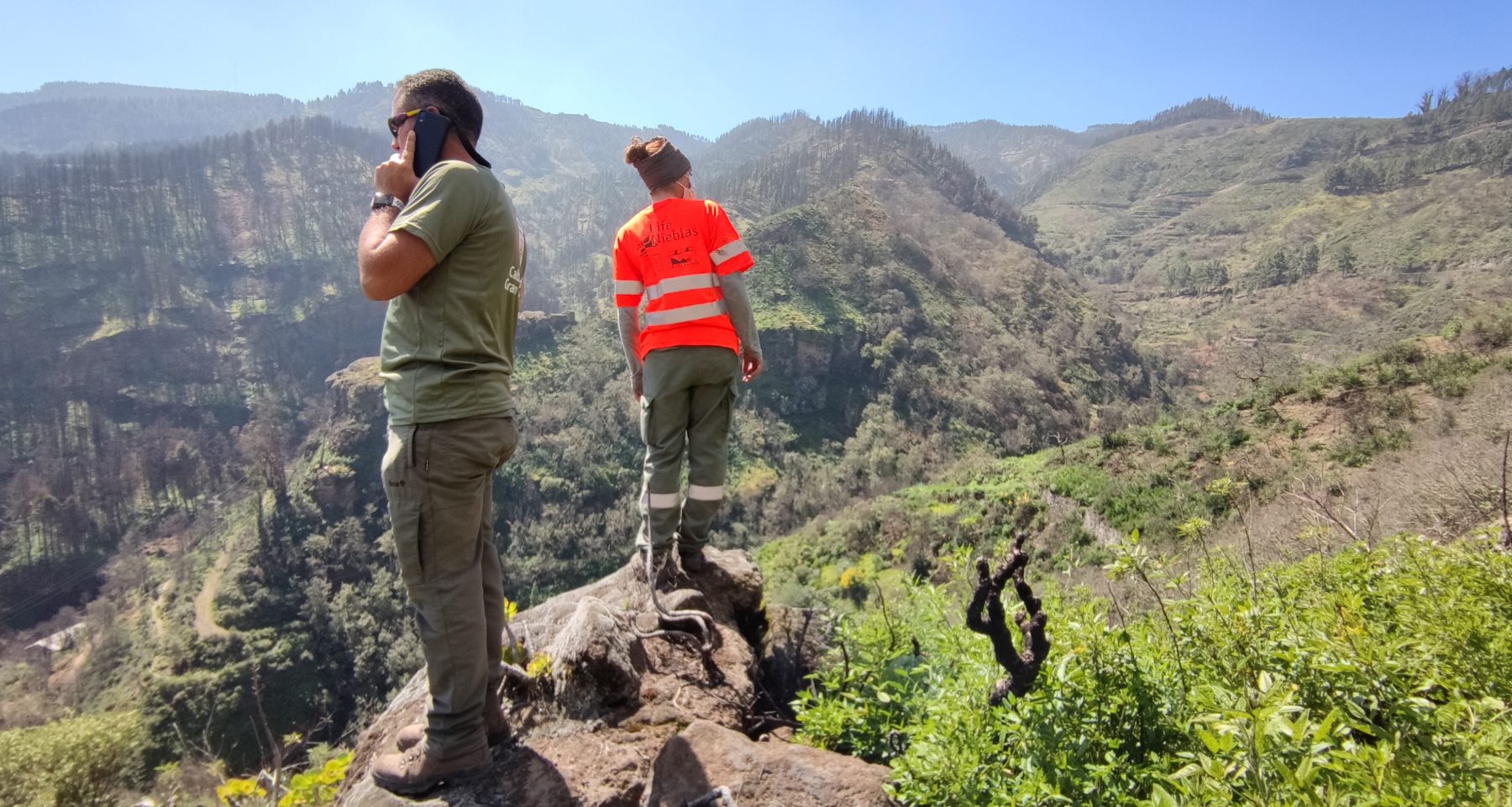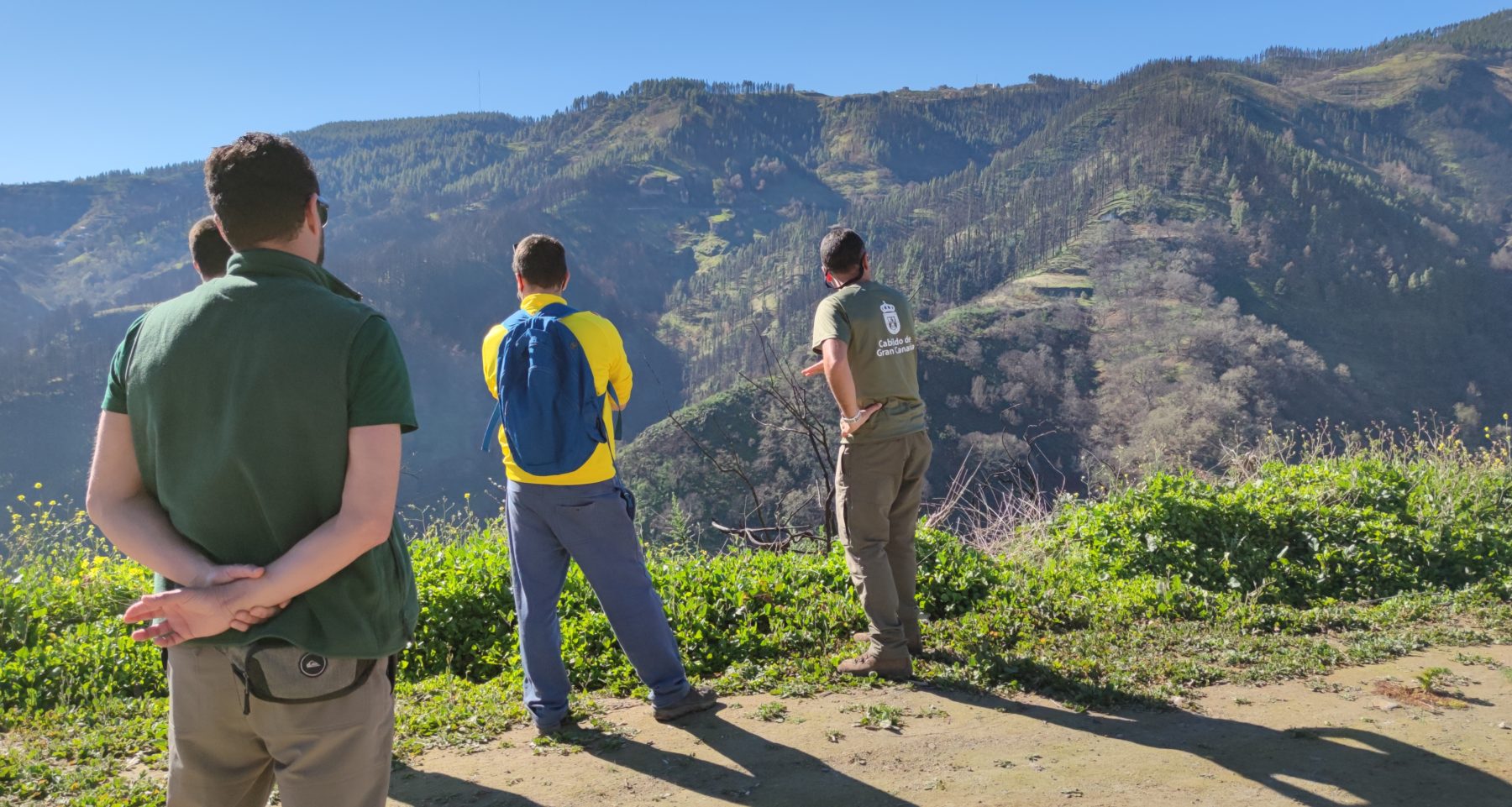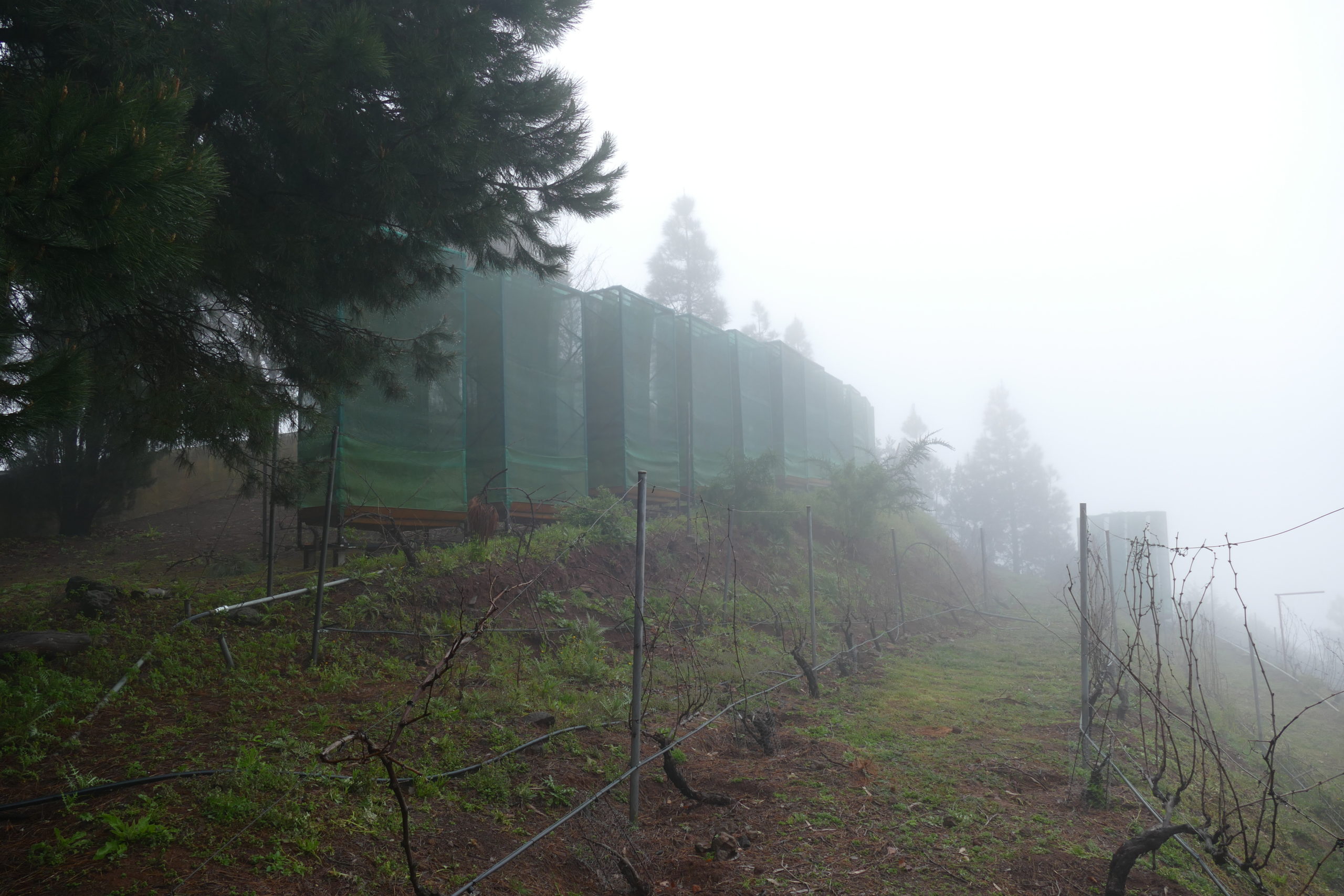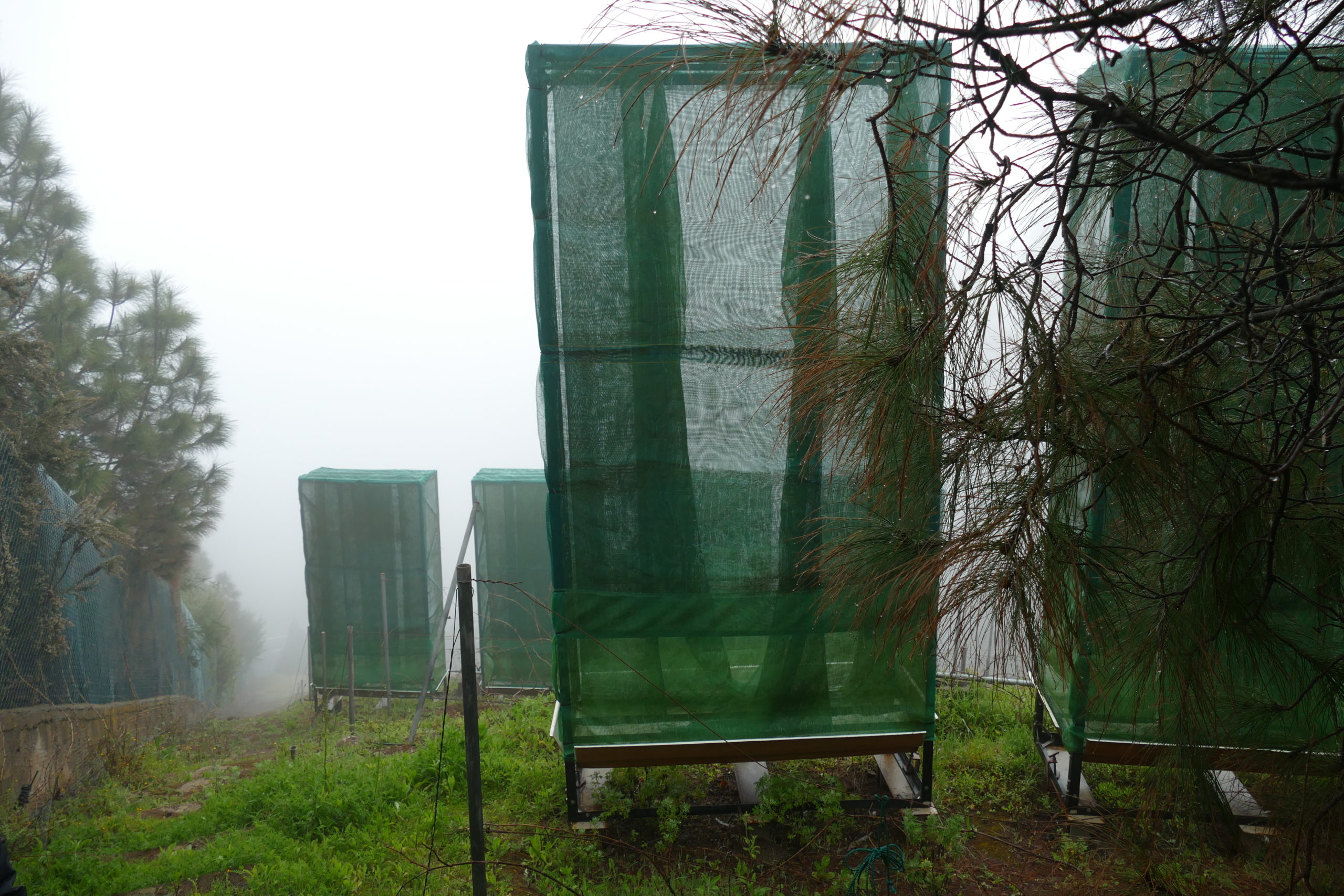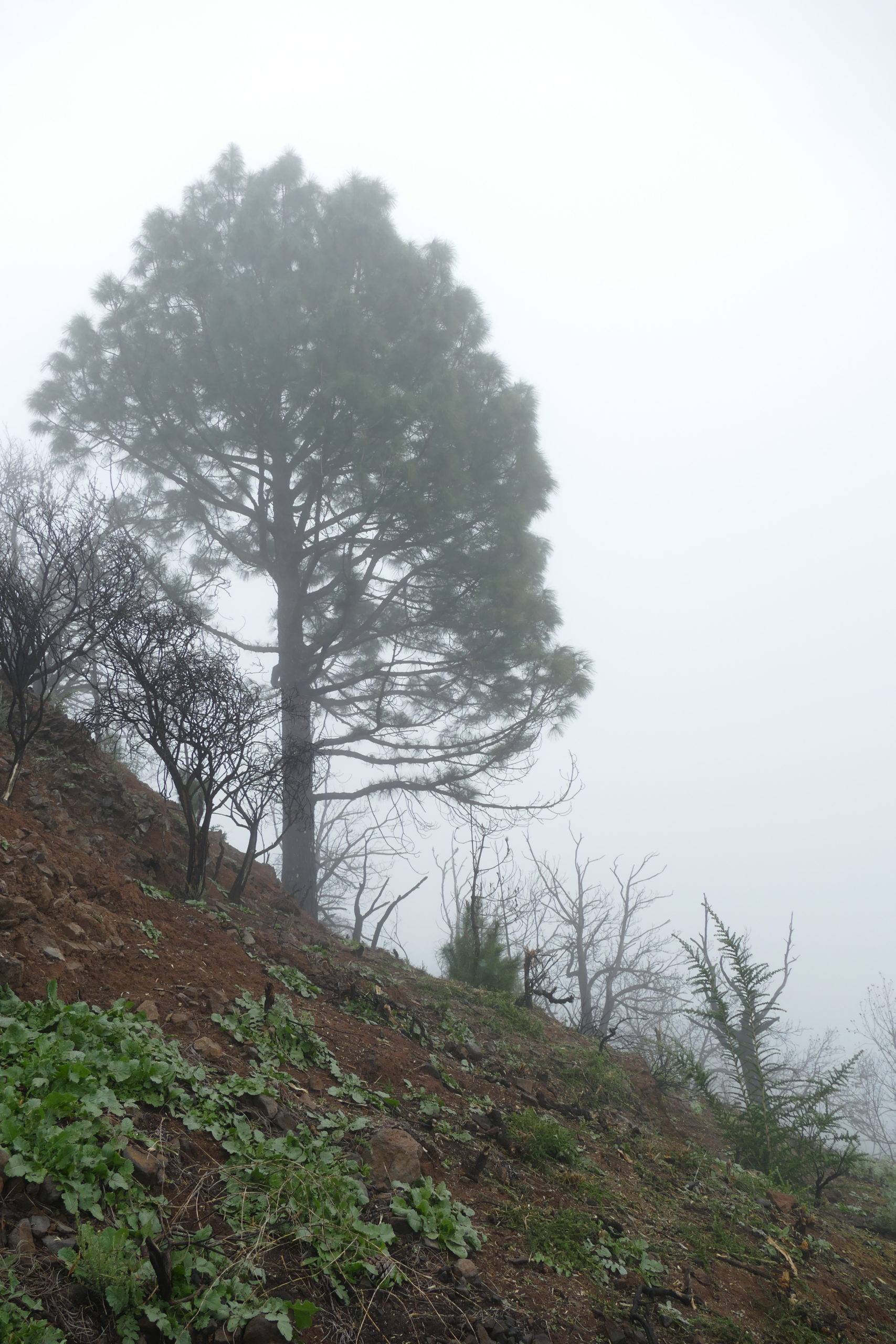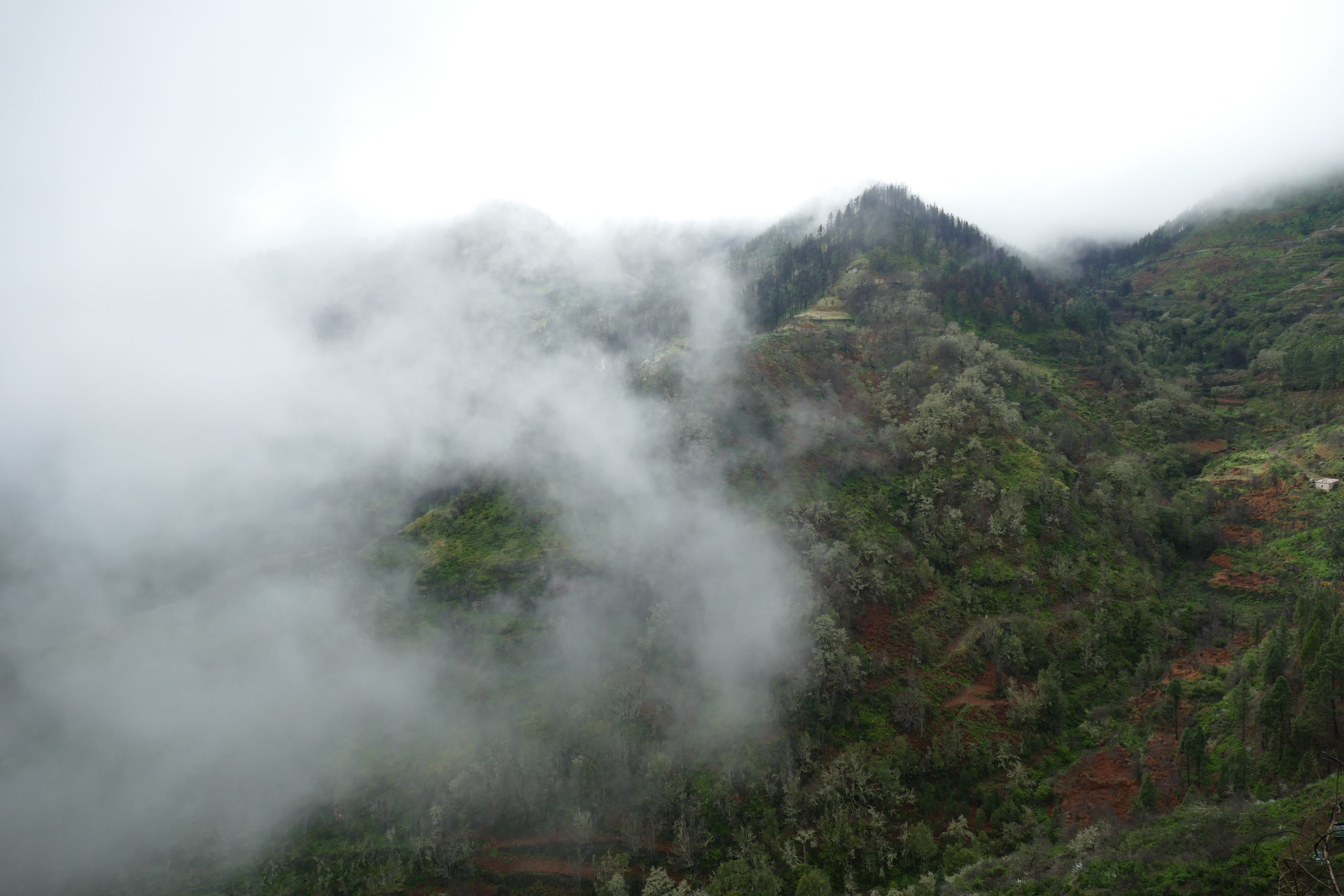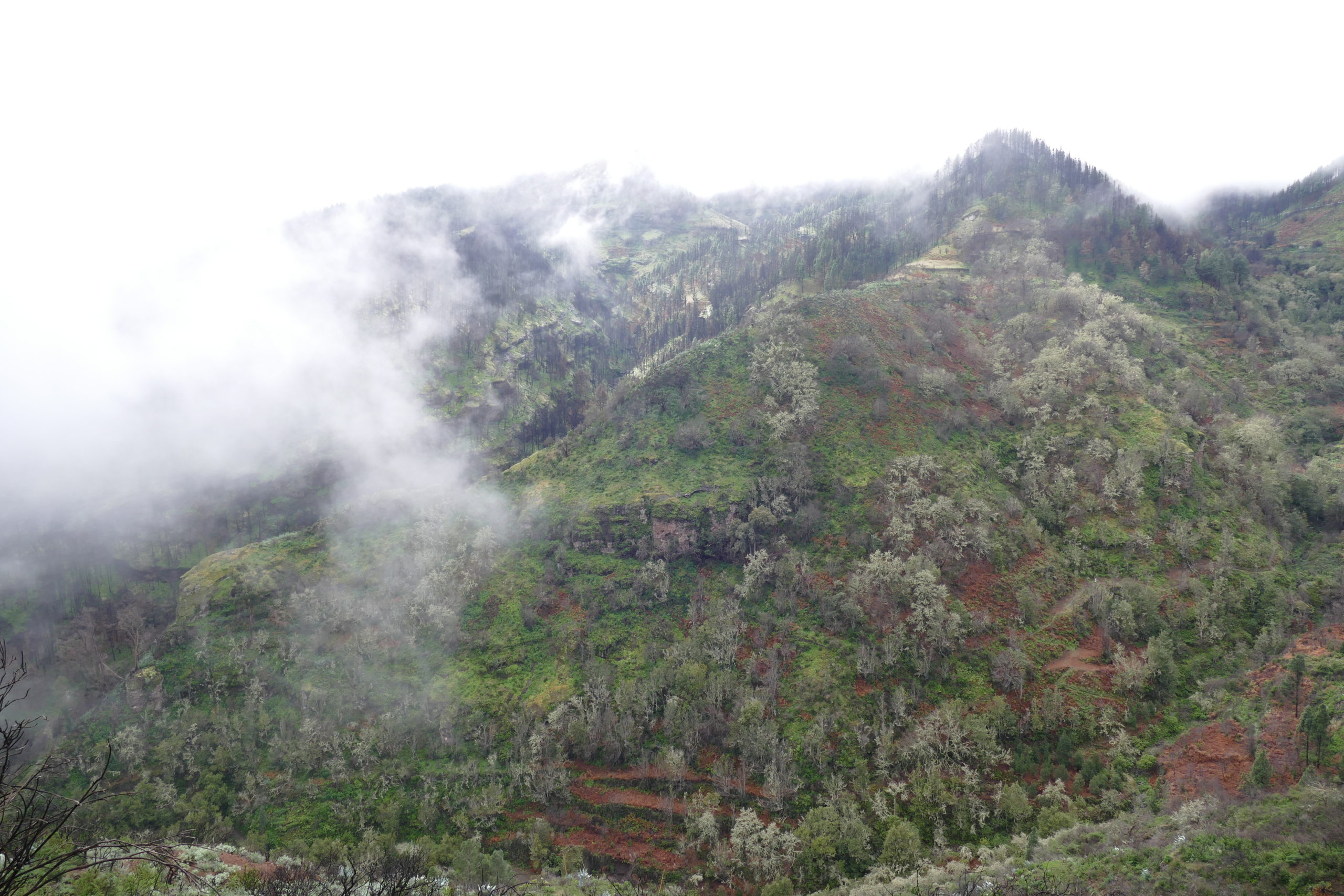Overview
The Life NIEBLAS project will be held in Portugal and in two areas of Spain: Catalonia and the Canary Islands.
It aims to test innovative fog collectors and typologies of reforestation based on fog water collection, that don’t significantly increase the carbon footprint compared to the traditional typologies, taking into account: their effectiveness, costs and benefits, including as far as possible, the externalities they produce.
Specific objectives:
- Demonstrate and disseminate the effectiveness, efficiency and capacity of the innovative fog collectors and reforestation typologies and the equipment linked to them to be tested in the Project, in contrast to traditional typologies.
- To improve the resilience to climate change of degraded areas in Canary Islands and Portugal through reforestations.
- Create synergies between the results of the project and reforestation, environmental, agrarian, and energy and water management sectors and policies in the Canary Island, Spain, Portugal, Europe and EU.
- Awareness and consciousness raising on the relevance of forest covers regarding water resources; showing the environmental importance of its conservation, recovery, maintenance and extension to improve the resilience to climate change.
Quick Facts
Geographic Region:
Europe
Country or Territory:
Spain, Portugal
Biome:
Temperate Forest
Ecosystem:
Temperate Forest - Mixed
Area being restored:
UE community interest habitats.
Project Lead:
Gesplan
Organization Type:
Governmental Body
Project Partners:
Gestión y Planeamiento Territorial y Medioambiental, S.A. (GESPLAN)
Cabildo Insular de Gran Canaria
Comuniade Intermunicipal Viseu Dão Lafões
Centro de Investigación Ecológica y Aplicaciones Forestales (CREAF)
Heredad de Aguas de Arucas y Firgas
Instituto Canario de Investigaciones Agrarias (Canarian Crop Research
Institute)
Instituto Tecnológico de Canarias, S.A.
Universidad de La Laguna
Project Stage:
Implementation
Start Date:
2020 -09
End Date:
2024-12
Primary Causes of Degradation
Agriculture & Livestock, Deforestation, Fire & Weather Events, Fragmentation, Invasive Species (native or non-native pests, pathogens or plants), OtherDegradation Description
The area is characterized for presenting a high level of degradation for: the harsh climate, high exposure to sunlight and anthropogenic factors, primarily deforestation activities throughout the last centuries. Also, the recent wildfire activity serves as a contributory factor for overall land degradation. Natural factors (i.e. biophysical, meteorological, and climactic) leading to overall land degradation in the area are substantially significant, in contrast to the any socio-economic factors.
Defining the Reference Ecosystem
The reference ecosystem is based on diverse sources of information (e.g. multiple extant reference sites, field indicators, historical records, predictive data).Reference Ecosystem Description
In Gran Canaria (Canary Islands) reforestation actions will take place in the priority habitat 4050, “”Endemic Macaronesian heaths”. The objective of habitat restoration includes the endemic macaronesian heaths, where dry laurel forest species would be planted. The primary aim of such plantations is to promote proactiveness in conservation and compensation for habitat impacts and/or loss, as well as improving the general resilience of the area, subjected to land degradation factors. Another key objective is to improve the environmental quality and water infiltration and permeation to the underlying soil strata, control runoff and reverse, or stagnate the currently increasing probability of desertification.
In Portugal reforestation actions will take place mainly in the habitat 9230, “Galicio-Portuguese oak woods with Quercus robur and Quercus pyrenaica”. The objective is to restore this habitat subject to land degradation and human impacts, as indicated before. Like the restoration in Gran Canaria, another key objective is to improve water availability through reducing runoff and improving infiltration and at the same time reduce the desertification risk.
Project Goals
- Demonstrate and disseminate the effectiveness, efficiency and capacity of the innovative fog collectors and reforestation typologies and the equipment linked to them to be tested in the Project, in contrast to traditional typologies.
- To improve the resilience to climate change of degraded areas in Canary Islands and Portugal, through reforestations.
- Create synergies between the results of the project and reforestation, environmental, agrarian, and energy and water management sectors and policies in Spain, Portugal, Europe and EU.
- Awareness and consciousness raising on the relevance of forest covers regarding water resources; showing the environmental importance of its conservation, recovery, maintenance and extension to improve the resilience to climate change.
Monitoring
Stakeholders
European, national, regional and local authorities, promoters of climate change mitigation actions. As it is in their interest to know and promote techniques with the capacity of minimizing the carbon footprint in the maximum sectors as possible (in this case, the ones linked to reforestations, plantations and the obtaining, transport and use of water).
- Authorities or entities that promote and/or finance and/or execute reforestation actions:
- As it is in their interest to obtain a major effectivity and efficiency in these actions, and to dispose of objective and integrative methods to compare different reforestation typologies which will allow them to choose the best method possible. The following entities have already shown interest in replicating the reforestation typologies and the equipment linked to them:
– TAMADABA S.L., a rural tourism company which manages the rural and nature tourism complex named Redondo de Guayedra, placed in a property of more than 200 has in the Tamadaba SAC ES700000111, of the Natura 2000 Network, and in the Natural Park of Tamadaba, with a great ecological, cultural and arqueological value, where with the colaboration of the Council of Gran Canariaa reforestation action on a large scale is being carried out.
– Foresta Foundation, a non-profit entitiy registered since 1998 as a “Canarian Reforestation
Foundation”, whose objective is to “recover, mantain and preserve the forests masses of the Canary Islands”, being the only private capital foundation carring out reforestation activities in the Canary Islands.
– The company Red Eléctrica de España, S.A.U., in 2009 they launched the project “Red Electrica Forest” a project that contributes to the fight against climate change through the planting of trees and, at the same time, the conservation of a natural area rich in biodiversity or the recovery of a degraded natural area. Each year they help to reforest degraded areas in publicly owned land in different geographical areas nationwide, seeking the collaboration of various public bodies and organisations that work in this field.
– The Association of Farmers and Ranchers of the Canary Islands, ASAGA Canarias ASAJA, whose purpose is represent, manage, promote and defend the professional and economic interests of the agrarian sector in general.
– The University of Calabria, who collaborates with CREAF in some projects, is involved in different reforestation projects in Sardeña and Palestina, between others. Some of these areas have optimus environmental conditions to install fog collectors for reforestations replicances.
– The Hellenic Agricultrual Organisation – Demeter (HAO-DEMETER (formerly NAGREF)), established in 1989 they are responsible for Agricultural Research and Technology in Greece functioning under the auspices of the Ministry of Rural Development and Food.
– The Hellenic Society for the Protection of Nature (HSPN) is the oldes national environmental NGO in Greece, founded in 1951, and strives continuously for the protection of Greek nature since. It is active along four axes: environmental intervention; nature conservation; environmental education; sustainable management and general public awareness raising.
How this project eliminated existing threats to the ecosystem:
Actions and means presented roughly in chronological order:
1.1 Select: environmental, social and economic situation indicators; techniques; instruments and best locations.
1.2 Select: technical features, locations, and performance indicators for equipment linked to reforestations to test.
1.3 Training for standardization of tasks and data collection.
1.4 Replication and transfer of innovative fog collectors and innovative reforestation types tested.
1.5 Design of reforestations evaluation method according to efficacy, costs, benefits and externalities. Conversion in open web tool to evaluate/compare reforestations. Evaluation of the project's reforestations using the web tool as a basis.
1.6 Monitoring of: socio-economic impact; production of plants, reforestation typologies tested, environmental indicators of situation, installation and operation of equipment linked to typologies to test.
1.7 Web page; information panels; and Layman report.
1.8 Networking.
1.9 Holding of international days on climate change, reforestation, and fog collection.
1.10 Publication of manual to replicate reforestation types based on fog collection tested. ç2.1 Analysis of the status of the action area and establishment of guidelines.
2.2 Production of plants, reforestation with traditional and innovative typologies, and maintenance. Use of innovative and traditional fog collectors.
3.1 Creation of synergies presenting Project results to governments and lobbies.
4.1 Awareness about the role of forest covers.
4.2 Development of promotional and dissemination material. There will be also actions for overall project operation and monitoring.
Ecological Outcomes Achieved
Socio-Economic & Community Outcomes Achieved
Key Lessons Learned
The project starts in 2021-07, although the design and conceptualization started in 2020-09.
Long-Term Management
The development of the project will be completed by the end of the implementation. Nevertheless, its results will be enhanced thanks to the following compromises:
- Indefinite maintenance of the reforestations carried out in the project.
- Maintenance of the equipment to capture water and the equipment for irrigation for at least 2 years after the completion of the project. In any case, while they are functioning, the water captured will be used in other environmental reforestations around the area.
- Guidance visits to the performance area can be requested for at least 5 years after the completion of the project.
- Also, the Council of Gran Canaria and CIM VDL are assuming the following compromises for at least 5 years after the completion of the project:
- Integrate the innovative reforestation techniques tested in the project in their decision procedure on the modalities to be used in reforestation actions, which guarantees replications in Gran Canaria and Portugal.
- Integrate the results on the innovation on fog collectors in their decision procedure on the equipment to be used in reforestation actions, which guarantees replications in Gran Canaria and Portugal.
- The use of the Open Web Tool in their decision procedure to evaluate, compare and decide which reforestation typology should be used in future actions.
Sources and Amounts of Funding
European Commission, through the LIFE Programm.
Other Resources
Related Research
CREAF collaborates in the design of water scarcity adaptation measures, the evaluation of climate change impacts on water resources, the study of the water cycle via satellite imagery, and inspection of water quality in watersheds. In this field the center has experience on: • Management of environmental and climatic change at the local and regional scale and on the evaluation of adaptive strategies. • Pinpointing the adaptation processes and instruments for sustainable management based on the evaluation of adaptive strategies. • Exploring options for adaptation processes in water use and instruments for sustainable management of this scarce resource. • The Department of Vegetation Production in Tropical and Subtropical Regions at ICIA specifically has worked for more than 30 years on crop production and forest management, specifically in the topics of hydrology and the interactions taking place in the soil-plant-atmosphere continuum.Primary Contact
Name:
Vicenç Carabassa Closa
Affiliation:
CREAF, Cerdanyola del Vallès 08193
City:
Cerdanyola del Vallès
State:
Barcelona


